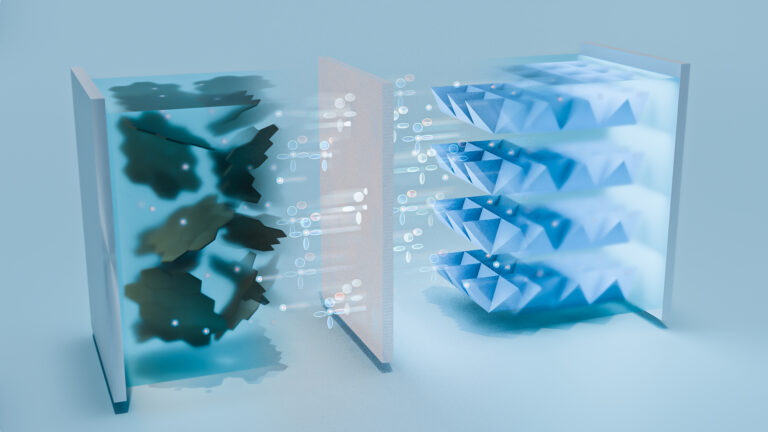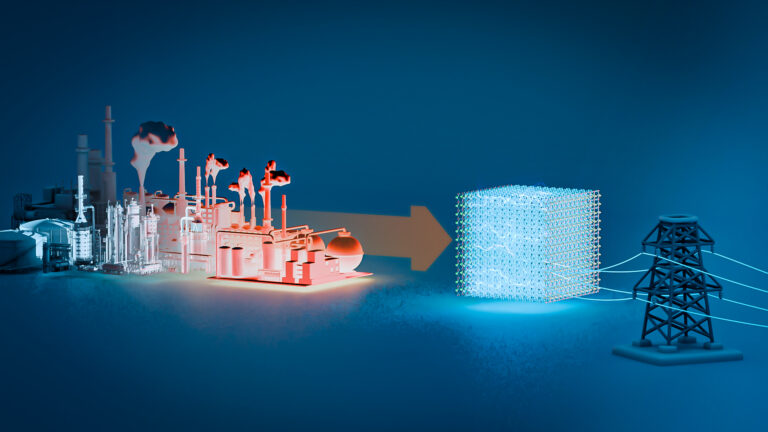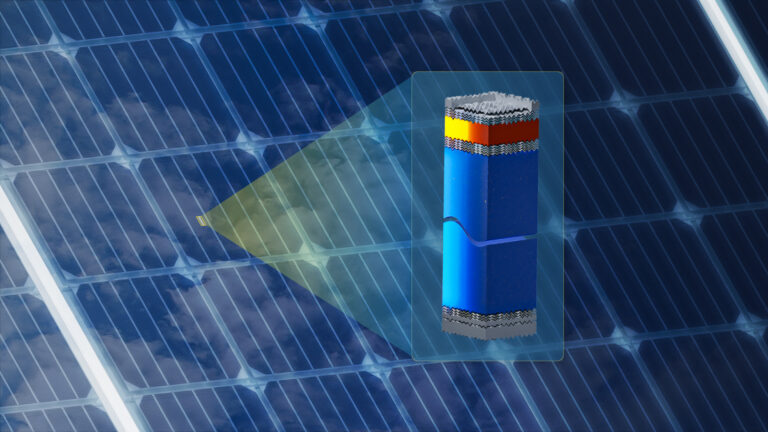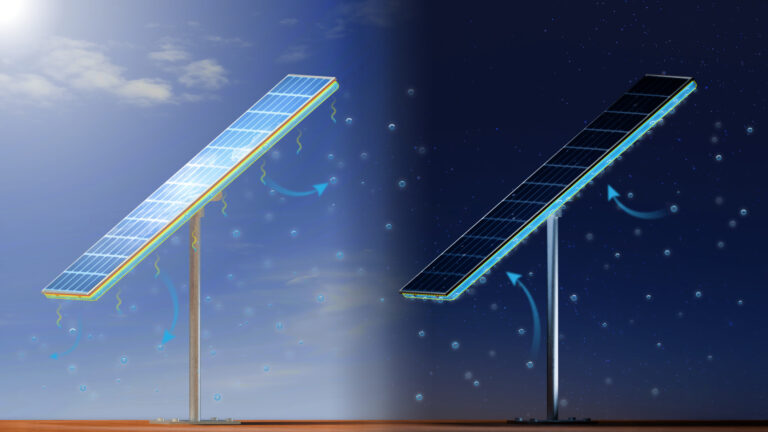Material Science and Engineering
On-off switches for quantum devices
Efficiently extracting the charge required by quantum dot solar cells can be controlled by chemically configuring molecules.


The efficiency of the charge transport from the quantum dot (green and orange schematic atoms) can be controlled by the electrical charges of the corners of porphyrin molecules (light gree/blue).
Reproduced from ref 1. with permission © 2014 American Chemical Society
A chemical ‘on-off switch’ that could improve the efficiency of solar cells as well as other electronic devices has been revealed by researchers from KAUST.
The efficiency of solar cell devices depends not just on the active region, where sunlight is converted into electricity, but also on the efficiency of the interface between the active regions and the device.
Studying devices based on small semiconductor nanocrystals, also known as quantum dots, a team from KAUST’s Solar and Photovoltaics Engineering Research Center has shown that chemical subgroups in the molecules, that couple to these quantum dots, can be used to switch the flow of electrical charges on and off1. “We can tune the electron injection into the quantum dot interface from zero to very efficient,” says Omar F. Mohammed, who led the research.
Quantum dot devices such as solar cells can be highly efficient and cost effective. The best way to connect to quantum dots is via porphyrin organic molecules — these are flat molecules with ring-like structures at each of their four corners (see image). The different groups on the corners can be deliberately chemically synthesized to have a positive electrical polarization at their ends, which then attract negative charges from the environment.
The researchers found that the transport of electrical charges from the porphyrin molecules through to quantum dots is greatly dependent on the number and position of the charged corners. If all four corners are electrically charged, then the transport of charges to quantum dots is suppressed. If however two neighboring corners are charged and the other two not, then the transport of charges through the quantum dots is very efficient and ultrafast.
The efficiency of this charge transport has been demonstrated using state-of-the-art equipment that can measure the dynamics of electrons at a broad range of energies with ultrafast time resolution of less than a millionth of a millionth of a second. These measurements confirm that the porphyrin variant with two neighboring charged corners shows a high efficiency and is also one of the fastest transports of electrical charges for such solar cells.
This information has implications for the design of quantum dot devices, says Mohammed. “The novel insights reported in this study provide a profound understanding of the key variables involved in the nanoassembly of devices.” Mohammed says the discovery is a big step toward the exploitation of an efficient charge transfer, an essential breakthrough for optimal device performance.
References
- Aly, S.M., Ahmed, G.H., Shaheen, B.S., Sun, J. & Mohammed, O.F. Molecular-structure control of ultrafast electron Injection at cationic porphyrin−CdTe quantum dot interfaces. Journal of Physics and Chemistry Letters 6, 791−795 (2015).| article
You might also like

Applied Physics
A single additive enables long-life, high-voltage sodium batteries

Bioengineering
Smart patch detects allergies before symptoms strike

Applied Physics
Two-dimensional altermagnets could power waste heat recovery

Applied Physics
Interface engineering unlocks efficient, stable solar cells

Applied Physics
The right salt supercharges battery lifespan

Applied Physics
Light-powered ‘smart vision’ memories take a leap forward

Applied Physics
Natural polymer boosts solar cells

Material Science and Engineering



